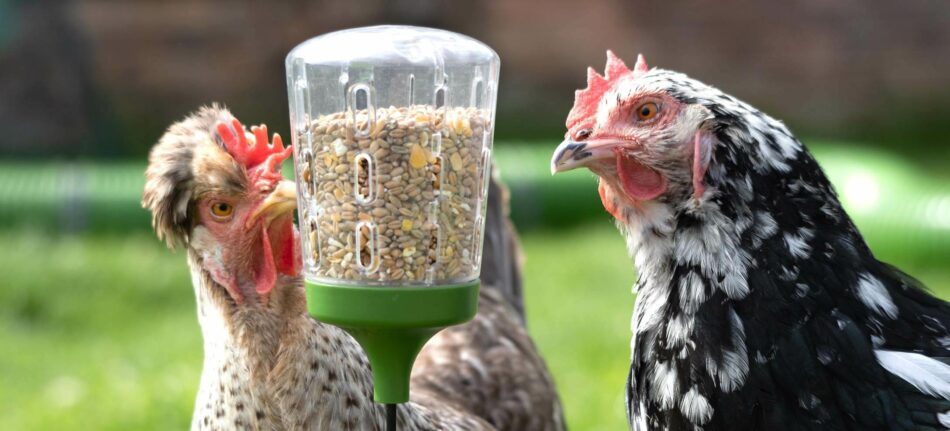Chicken breeds 101
Reading through different chicken breeds and their characteristics can be confusing. The many traits, appearances, and sizes of chickens make them a very diverse species. In our Chicken Breeds 101, we’ll uncover the most commonly used terms and address pressing questions that have to do with breeds of chickens.
Chicken breed grouping
Some common chicken breed groupings include:
- Laying breeds
- Dual purpose breeds
- Heritage breeds
- Ornamental breeds
There are also 6 classes of chicken breeds, based on where they originated:
- American
- Asiatic
- Continental
- English
- Mediterranean
- All other standard breeds
Within these groupings, there are size groupings of:
- Standard
- Bantam
What is a bantam?
There are standard sizes of chicken breeds, and there are also bantam sizes of many breeds. Bantams are miniature versions of their standard counterparts. There are also “true bantams”, meaning they have no standard size and come only in their petite varieties. True bantams include:
Bantams take up less space, so they’re a great choice for small spaces like backyards.
What is a heritage breed?
Heritage breeds are those that were raised by our ancestors. All of our modern chicken breeds were derived from these. Several heritage breeds are endangered due to the emphasis put on developing new breeds. Breeding efforts have helped stabilize their populations, allowing them to grace common backyards once more. Some heritage breeds include:
What is an ornamental breed?
Ornamental breeds are bred for their looks instead of their productivity. As a rule, they tend to lay fewer eggs and be less heavy in stature. Some examples of ornamental breeds include:
These types of chickens make excellent pets and fabulous yard art.
What is the largest chicken breed?
The Jersey Giant usually takes the cake for the biggest bird on the block, but Brahmas are a close second. On average Jersey Giants are the largest, but a Brahma currently holds the record for largest chicken.
Which chicken breeds lay the most eggs?
Breeds of hens that have earned a reputation for their prolific egg laying are those that usually lay around 250 eggs per year. In comparison, ornamental breeds lay between 120-150 eggs per year on average.
Leghorns are the most consistent laying breed, with an average of 280-320 eggs per year. Other chicken breeds known for their egg production include:
How can you tell which colour egg a hen will lay?
Several chicken breeds are known for their colourful egg laying abilities. Egg color is determined by genetics, and a hen will lay the same colour their entire lives. All egg shells start out white, but if a hen carries a gene that causes pigmented eggs, it will be applied in the shell gland before being laid. These colours don’t affect the egg’s taste or nutritional value, and don’t penetrate past the shell.
The chicken breeds that lay coloured eggs are either pure-bred, or the result of crossing a brown egg layer with blue egg genetics. The blue egg laying breeds that are crossed with other lines to produce different hues of eggs are Ameraucanas and Araucanas.
Some hens may give you a hint as to which colour they lay. By looking at their earlobes (the fleshy patch of skin on either side of their head), you may be able to predict egg shell colour. This isn’t always accurate, as some breeds like Silkies lay cream coloured eggs, but often have blue earlobes. But, in general, hens with white earlobes lay white eggs, and hens with red earlobes lay brown eggs.
Feather terminology
There are some terms that are used when talking about feathering. These are in reference to patterns on each individual feather, which gives the chicken its overall patterned appearance.
- Barred — alternating dark and light stripes
- Cuckoo — similar to barring, but with less defined lines
- Laced — edges of the feathered having an alternate colour
- Mottled — white-tipped feather interspersed throughout
- Penciled — fine lines of contour colour along the feather
- Spangled — white mid-section on feathers
How to determine the sex of chickens
Some breeds are “auto-sexing”, which means they can be determined as male and female upon hatching. These breeds hatch out with specific markings that are consistent with their gender. There are also methods of checking wing-feather length, but this method isn’t the most reliable. For breeds that don’t auto-sex, it’s usually difficult to determine gender until young roosters crow — typically between 4 and 6 months of age.
Omlet and all breeds of chickens
No matter which breed you’ve researched, or decided to welcome into your family, our chicken coops, chicken runs, and chicken-keeping essentials like the automatic chicken coop door give you an experience as unique as your flock. Discover how refining your chickens’ setup along with your knowledge is part of the amazing experience that is keeping chickens.
This entry was posted in Chickens



One reply on “Chicken breeds 101”
Thank you for this fun and informative guide on keeping chickens entertained! I loved the ideas like chicken perches, dust bathing areas, and the clever toys. It’s great to know how to keep my flock active and happy. The tips on rotating their environment and spending time with them were especially helpful, especially considering chicken rates today can vary with different levels of enrichment. Your advice will definitely help keep my chickens from getting bored and ensure they stay healthy and content! Thanks again!